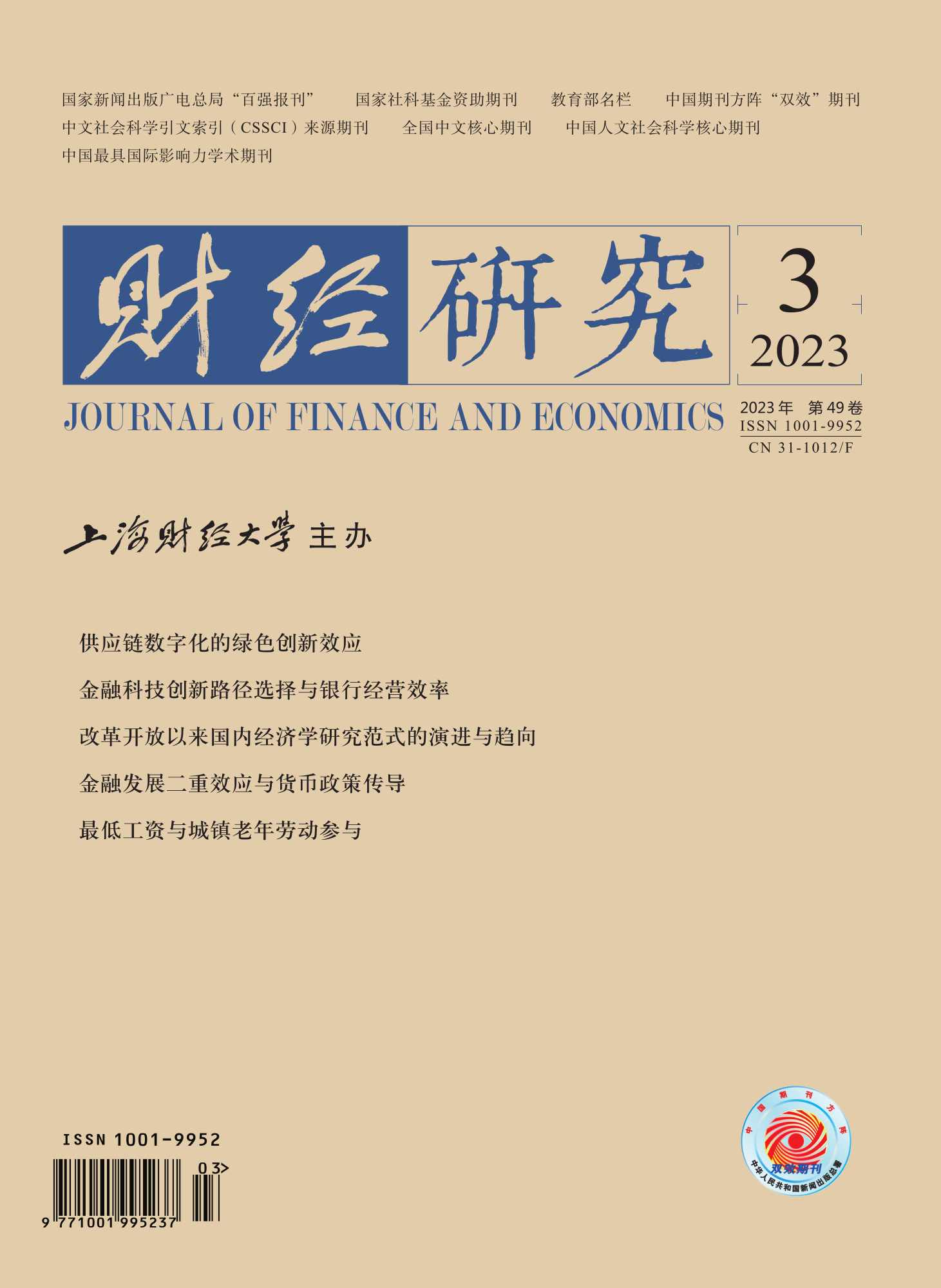创新是引领发展的重要动力。文章用互联网信息化水平和交通基础设施建设分别衡量“线上交流”与“线下交流”的便利程度,通过收集2007—2019年283个地级市的面板数据,构建空间面板杜宾模型,实证研究了线上“显性知识”交流与线下“隐性知识”共享对区域创新成果数量和质量的影响。研究结果显示,考虑了知识在空间上的溢出效应之后,“线上交流”与“线下交流”并非完全替代关系。虽然“线上交流”可以有效提升本地区和邻近地区的创新成果数量,但对创新成果质量的影响十分有限。只有把互联网信息化发展带来的“线上交流”与交通基础设施建设实现的“线下交流”相结合,才能综合利用“显性知识”和“隐性知识”提升区域创新成果质量。文章的研究为持续推进以高铁为代表的国家综合立体交通网、工业互联网新型基础设施建设以及提升中国创新成果的数量和质量具有重要启示意义。
互联网时代“线下交流”不再重要了吗?——基于“知识空间溢出”悖论与区域创新的检验
摘要
参考文献
3 董艳梅, 朱英明. 高铁建设能否重塑中国的经济空间布局−基于就业、工资和经济增长的区域异质性视角[J]. 中国工业经济,2016,(10):92−108. DOI:10.19581/j.cnki.ciejournal.2016.10.007
5 何凌云, 陶东杰. 高铁开通对知识溢出与城市创新水平的影响测度[J]. 数量经济技术经济研究,2020,(2):125−142. DOI:10.13653/j.cnki.jqte.2020.02.007
12 彭向, 蒋传海. 产业集聚、知识溢出与地区创新−基于中国工业行业的实证检验[J]. 经济学(季刊),2011,(3):913−934. DOI:10.13821/j.cnki.ceq.2011.03.013
14 田相辉, 徐小靓. 创新生产的空间效应与结构效应[J]. 管理评论,2018,(3):95−101. DOI:10.14120/j.cnki.cn11-5057/f.2018.03.009
15 宛群超, 袁凌. 创新要素流动与高技术产业创新能力[J]. 科研管理,2021,(12):80−87. DOI:10.19571/j.cnki.1000-2995.2021.12.010
16 王雨飞, 倪鹏飞, 赵佳涵, 等. 交通距离、通勤频率与企业创新−高铁开通后与中心城市空间关联视角[J]. 财贸经济,2021,(12):150−165. DOI:10.3969/j.issn.1002-8102.2021.12.011
17 徐德英, 韩伯棠. 地理、信息化与交通便利邻近与省际知识溢出[J]. 科学学研究,2015,(10):1555−1563. DOI:10.3969/j.issn.1003-2053.2015.10.015
18 叶德珠, 潘爽, 武文杰, 等. 距离、可达性与创新−高铁开通影响城市创新的最优作用半径研究[J]. 财贸经济,2020,(2):146−160. DOI:10.3969/j.issn.1002-8102.2020.02.010
20 余泳泽, 庄海涛, 刘大勇, 等. 高铁开通是否加速了技术创新外溢?—来自中国230个地级市的证据[J]. 财经研究,2019,(11):20−31. DOI:10.16538/j.cnki.jfe.2019.11.002
23 Bloom N, Garicano L, Sadun R, et al. The distinct effects of information technology and communication technology on firm organization[J]. Management Science,2014,60(12): 2859−2885. DOI:10.1287/mnsc.2014.2013
24 Dong X F, Zheng S Q, Kahn M E. The role of transportation speed in facilitating high skilled teamwork across cities[J]. Journal of Urban Economics,2020,115: 103212. DOI:10.1016/j.jue.2019.103212
25 Huang Z K, Li L X, Ma G R, et al. Hayek, local information, and commanding heights: Decentralizing state-owned enterprises in China[J]. American Economic Review,2017,107(8): 2455−2478. DOI:10.1257/aer.20150592
26 Nonaka I, Von Krogh G. Perspective-Tacit knowledge and knowledge conversion: Controversy and advancement in organizational knowledge creation theory[J]. Organization Science,2009,20(3): 635−652. DOI:10.1287/orsc.1080.0412
27 Poleacovschi C, Javernick-Will A, Tong T, et al. Engineers seeking knowledge: Effect of control systems on accessibility of tacit and codified knowledge[J]. Journal of Construction Engineering and Management,2019,145(2): 04018128. DOI:10.1061/(ASCE)CO.1943-7862.0001594
28 Storper M, Venables A J. Buzz: Face-to-face contact and the urban economy[J]. Journal of Economic Geography,2004,4(4): 351−370. DOI:10.1093/jnlecg/lbh027
29 Van Den Berg H A. Three shapes of organisational knowledge[J]. Journal of Knowledge Management,2013,17(2): 159−174. DOI:10.1108/13673271311315141
30 Yu M, Fan W. Accessibility impact of future high speed rail corridor on the piedmont Atlantic megaregion[J]. Journal of Transport Geography,2018,73: 1−12. DOI:10.1016/j.jtrangeo.2018.09.014
31 Zhang X Z, Wu W X, Zhou Z X, et al. Geographic proximity, information flows and corporate innovation: Evidence from the high-speed rail construction in China[J]. Pacific-Basin Finance Journal,2020,61: 101342. DOI:10.1016/j.pacfin.2020.101342
引用本文
郑维伟, 瞿茜, 刘耀彬, 等. 互联网时代“线下交流”不再重要了吗?——基于“知识空间溢出”悖论与区域创新的检验[J]. 财经研究, 2023, 49(3): 155-168.
导出参考文献,格式为:
上一篇:存款保险制度变革与银行流动性创造
下一篇:社会网络如何影响代际收入流动?





 6072
6072  6189
6189

